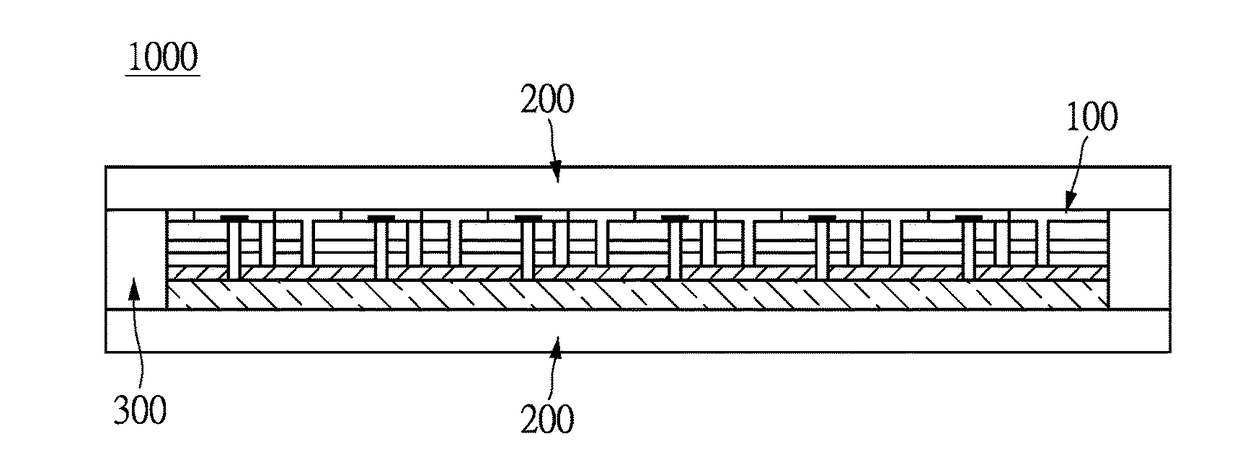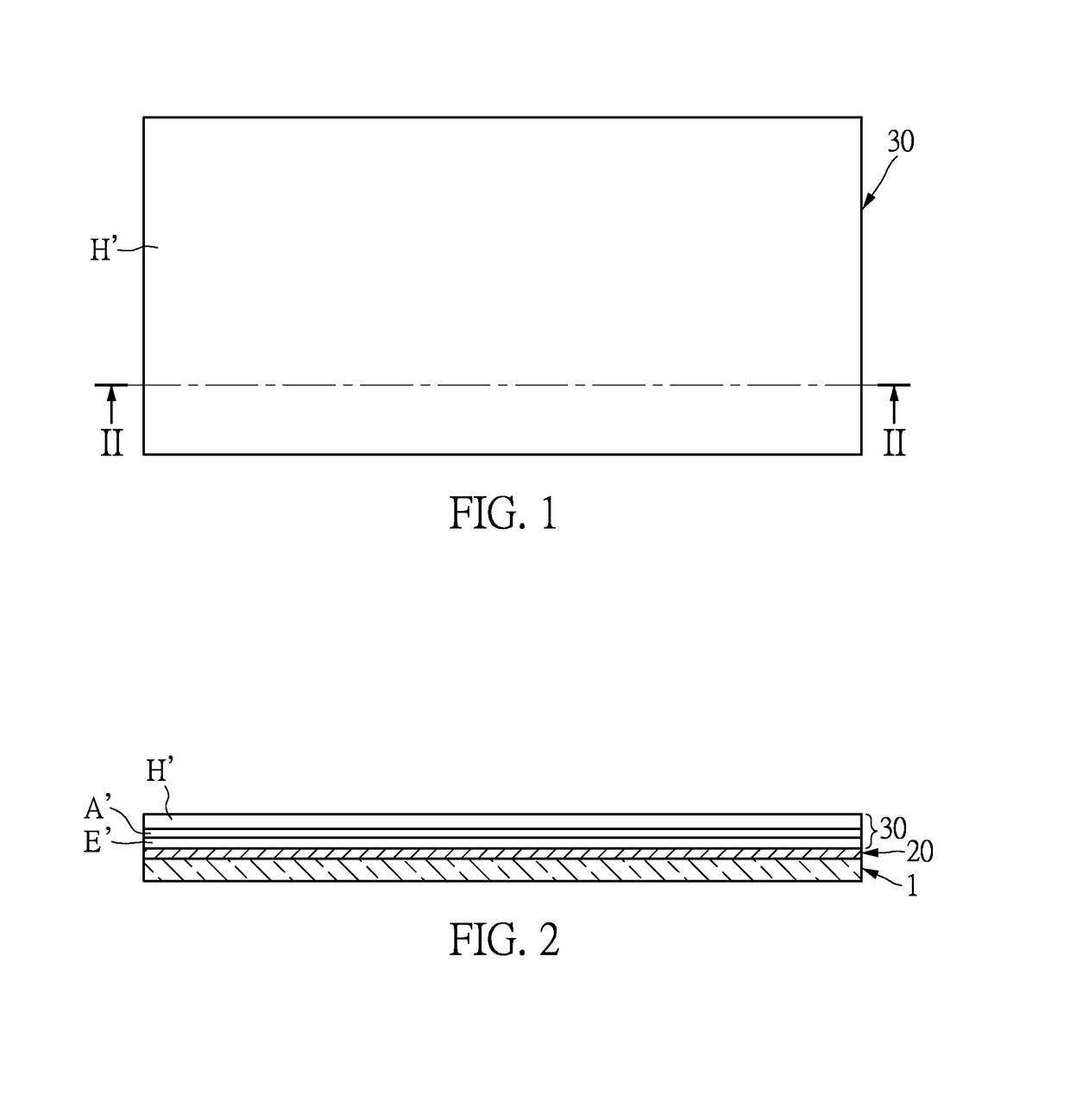Photovoltaic device, photovoltaic cell, and photovoltaic module
- Summary
- Abstract
- Description
- Claims
- Application Information
AI Technical Summary
Benefits of technology
Problems solved by technology
Method used
Image
Examples
first embodiment
[0035]Reference is made to FIGS. 1 to 12, which illustrate a first embodiment of the present disclosure. The present embodiment discloses a photovoltaic cell 100. The following description first addresses a method for manufacturing the photovoltaic cell 100 in order to clearly describe the structure of the photovoltaic cell 100. The method of the present embodiment includes steps S110 to S150, but the manufacturing method of the photovoltaic cell 100 is not limited thereto.
[0036]Reference is made to FIGS. 1 and 2, which illustrate step S110. A conductive layer 20 and a photovoltaic layer 30 are sequentially stacked on a substrate 1, that is to say, the conductive layer 20 is sandwiched between the conductive layer 20 and the substrate 1. The photovoltaic layer 30 in the present embodiment is a multi-layer structure including an electron transferring layer E′, an active layer A′ stacked on the electron transferring layer E′, and an electronic hole transferring layer H′ stacked on the...
second embodiment
[0058]Reference is made to FIG. 13, which illustrates a second embodiment of the present disclosure. The present embodiment discloses a photovoltaic device 1000 including the photovoltaic cell 100 of the first embodiment, two protective layers 200, and a package compound 300. The photovoltaic cell 100 has been described in the first embodiment, so that the present embodiment will not describe the structure features of the photovoltaic cell 100 again.
[0059]Moreover, the two protective layers 200 are respectively disposed on two opposite sides of the photovoltaic cell 100 (i.e., the top side and the bottom side of the photovoltaic cell 100 as shown in FIG. 13). The package compound 300 is formed to connect the two protective layers 200 and is arranged around the photovoltaic cell 100, such that the photovoltaic cell 100 can be arranged in an enclosed space defined by the package compound 300 and the two protective layers 200.
[0060]Specifically, the package compound 300 can be made of ...
PUM
 Login to View More
Login to View More Abstract
Description
Claims
Application Information
 Login to View More
Login to View More - R&D
- Intellectual Property
- Life Sciences
- Materials
- Tech Scout
- Unparalleled Data Quality
- Higher Quality Content
- 60% Fewer Hallucinations
Browse by: Latest US Patents, China's latest patents, Technical Efficacy Thesaurus, Application Domain, Technology Topic, Popular Technical Reports.
© 2025 PatSnap. All rights reserved.Legal|Privacy policy|Modern Slavery Act Transparency Statement|Sitemap|About US| Contact US: help@patsnap.com



